All issues

Volume 11, Issue 3
Displaying 1-8 of 8 articles from this issue
- |<
- <
- 1
- >
- >|
-
Kiyoshi TAKEUCHI, Akio YAMAJI1974Volume 11Issue 3 Pages 81-90
Published: March 25, 1974
Released on J-STAGE: April 18, 2008
JOURNAL FREE ACCESSThe significant discrepancies often observed between the discrete Sn calculations and the measurements of the angular flux spectrum of neutrons at an angle of 0° have been studied for the benefit of analyses of time-of-flight measurements. Examination of the uncollided angular flux and scalar flux distribution yielded information on the relation between the accuracies obtainable in the calculations and the order of quadrature set used therein. Predictions on the angular flux in graphite resulting from the use of S16, S32 and S48 quadratures, and on the scalar flux in water from the S16 quadrature were compared with the results of measurements and of PALLAS transport calculations. It was found as a result that the S48 quadrature is most suitable for analyzing the 0° angular flux spectrum of the time-of-flight measurements, and that the S16 quadrature is sufficient for scalar neutron flux calculations for reactor shields. The spurious fluctuations observed in the ANISN angular distributions are not due to insuffici-ency in the number of iterations in computation, but to the coarseness of the spatial intervals used.View full abstractDownload PDF (697K) -
Kazuhiro WADA, Koushi SAINO1974Volume 11Issue 3 Pages 91-98
Published: March 25, 1974
Released on J-STAGE: April 18, 2008
JOURNAL FREE ACCESSA theoretical treatment of single-stage sweep diffusion process is presented. Several workers have analyzed the sweep diffusion process by assuming a relation governing the diffusion fluxes, or by approximating the boundary conditions of the concentrations. The model adopted in our present theory consists of a horizontal diffusion pipe and two mixing chambers attached to each end of the pipe ; these chambers act as the charge and discharge systems of the stage. The boundary conditions of the diffusion equations are given by mass balance considerations around the chambers, so that the separation factor and the diffusion fluxes can be estimated in terms of three flow rates of streams : feed, separating agent, product or waste. In the case of nitrogen isotope separation with CO2 gas as separating agent, the calculated values of fluxes agree very closely with the experimental results. However, the magnitudes of the separation factor minus one obtained experimentally are about 16% smaller than the corresponding theoretical values. This discrepancy would appear attributable to the presence of some convective mixing through the diffusion pipe.View full abstractDownload PDF (555K) -
Toshimi YAMANE, Junzo TAKAHASHI, Genjiro MIMA1974Volume 11Issue 3 Pages 99-103
Published: March 25, 1974
Released on J-STAGE: April 18, 2008
JOURNAL FREE ACCESSTwo kinds of Fe-Al-N alloy were irradiated in the JRR-2 reactor with neutron doses of 12×1019n/cm2 at about 60°C. Using internal friction and torsion test techniques, the atomistic behavior of the structure was studied through observation of the changes brought to the mechanical properties by neutron irradiation and subsequent annealing. The internal friction measurements revealed that irradiation brought about release of nitrogen from Fe8N and A1N. Moreover, the damping curves indicated, upon analysis, the existence of two new peaks, at, 120°C and 145°C. With annealing, recovery of radiation hardening started from a tempera-ture between 150° and 200°C, and terminated by 350°C.View full abstractDownload PDF (342K) -
Isao TANAKA, Kazuyuki ONODERA1974Volume 11Issue 3 Pages 104-109
Published: March 25, 1974
Released on J-STAGE: April 18, 2008
JOURNAL FREE ACCESSA reluctance type pressure sensor for continuous measurements of the fission gas pressure in fuel pins during irradiation was developed and irradiated in the JMTR. The pressure sensor is constituted of magnetic materials and electric wire, which may be affected by the effect of heat and radiation, and this in turn may impair the accuracy of the pressure sensor. An irradiation test was performed to obtain quantitative information on the accuracy of the pressure sensor itself and for examining its viability in actual use under radiation. The test was made during three cycles of operation of the JMTR at 30 MW reactor power. The calculated neutron fluence was about 4.2 x 1019n/cm2 (E>1.05 MeV) and 6.8 X 1020n/cm2 (E<1.05 MeV).
It was found that the effect of heat was larger than that of radiation to a fluence of this order, but the former effect can be reduced by correction for temperature. The error due to radiation effect is estimated to be about ±1.0% at the limiting pressure of 50 kg/cm2G. The error at full power (30 MW), including the ±1.0% given above for the radiation effect, as well as other errors such as that of the pressure sensor itself and the temperature effect remaining after correction, is estimated to be about ±1.8% at the limiting pressure of 50 kg/cm2G when the neutron fluence does not exceed the values indicated above. In actual measurements of the fission gas pressures in fuel pins, the total error including those inherent in the apparatus for measuring the back pressure, is expected to be about ±2.8 %. Practical application in reactor of the reluctance type pressure sensor has been proved to be promising as a result of this irradiation test.View full abstractDownload PDF (442K) -
Tomoaki HINO, Yasutomo OZAWA1974Volume 11Issue 3 Pages 110-111
Published: March 25, 1974
Released on J-STAGE: April 18, 2008
JOURNAL FREE ACCESSDownload PDF (126K) -
Yoshiharu MATSUOKA, Akira USAMI1974Volume 11Issue 3 Pages 112-113
Published: March 25, 1974
Released on J-STAGE: April 18, 2008
JOURNAL FREE ACCESSDownload PDF (145K) -
Junzo TAKAHASHI, Toshimi YAMANE1974Volume 11Issue 3 Pages 114-115
Published: March 25, 1974
Released on J-STAGE: April 18, 2008
JOURNAL FREE ACCESSDownload PDF (119K) -
1974Volume 11Issue 3 Pages 115
Published: 1974
Released on J-STAGE: April 18, 2008
JOURNAL FREE ACCESSDownload PDF (46K)
- |<
- <
- 1
- >
- >|